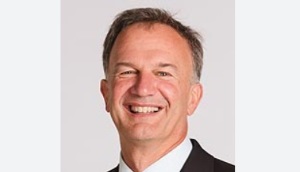
BNZ research head Stephen Toplis says it is a challenging time for the central bank as there is no doubt further easing will be required to fertilise the new growth but there is little clarity as to the requisite pace or extent of that easing.
“So wide is the uncertainty that reasonable people could present sound arguments for any rate cut ranging between 0.25% and 0.75% basis points at the November 27 Monetary Policy Statement.”
Cut of 0.25%
Key inflation and labour market data are coming out close to RBNZ’s expectations. Given that 0.50% cut has already been delivered this would argue for a moderate approach this time around, he says.
RBNZ inflation expectations measures have also risen slightly. The BNZ is not bothered by this, but Toplis says it does look like the out-turns are at the upper edge of what the RBNZ had anticipated and will have a dampening impact on the Bank’s desire to cut.
He says there is a good chance the arrival of incoming US president Donald Trump heralds a more inflationary world as tariffs and protectionism could well result in higher prices for a wide number of tradable goods.
Easier fiscal policy threatens to push inflation even higher in the United States resulting in tighter monetary policy from the Federal Reserve, which will have rate implications for central banks everywhere.
As things stand, US markets have already dramatically reduced the chances of a near term easing by the Fed and Governor Jerome Powell has intimated he is in no great rush to cut.
“We think the argument for 0.25% cut is marginally stronger than that for a 0.75%,” Toplis says.
Cut of 0.50%
Fundamentally, economic spare capacity continues to grow and will do so for some time.
Accompanying this, inflation will remain well contained around the 2% mark and the unemployment rate will rise further over the next few quarters.
Toplis says given the current level of the cash rate lies well above the range of possible neutral rates the BNZ sees strong justification for a greater than 0.25% move.
“Equally, though, we don’t think that what we are experiencing is a shock that requires a knee-jerk response.
“We’re not in a GFC or a pandemic but we are in a phase something more akin to a ‘normal’ economic cycle.
“The market is currently pricing in a 0.50% point cut and there is no need for the RBNZ to provide a shock which could result in unnecessary instability in interest rates, the currency and growth.”
Cut of 0.75%
The argument for a 0.75% cut is bolstered by the fact that there is a long wait until the next meeting in February, a wait that many think the RBNZ can’t afford.
“We get the sentiment, but we simply do not think the necessary excesses are in place to warrant such an aggressive move at this juncture,” Toplis says.
“And don’t forget that at the October Monetary Policy Review the committee’s discussion was around whether the Bank should cut 0.25% or 0.50%. Little weight was given to a 0.75% move.
For the BNZ most interest will be on any indication the Reserve Bank gives as to where it is likely to head in the New Year.
Toplis says It goes without saying the low in the cash rate will occur earlier than the RBNZ previously forecast because the cash rate will probably be 0.50% lower in yield by the end of November than was previously published.
“We get the sense the RBNZ’s low is likely to be brought forward from mid 2027 through to mid-2026. Its last low point was about 3%. We think it will stay somewhere near this.”
The BNZ has a low in the cash rate of 2.75% pencilled in for October 2025 – a pick it has had for a long time.
“The balance of risk is that we end up edging this higher, but we believe that market pricing of a 3.5% trough has downside risk, Toplis says.
Aggressive cutting
Kiwibank chief economist Jarrod Kerr is expecting the RBNZ to cut quite aggressively still.
He says the cash rate should fall to 4.25% next week and then to 3.75% in February on a path back to 3% next year and that will take mortgage rates into the low 5% to high 4% range, which should be enough to get some activity back into the housing market.
Smaller cut
Although predicting a 0.50% cut, Westpac chief economist Kelly Eckhold says the RBNZ might opt for a smaller cut because the starting point for the economy has not been quite as weak as depicted in the Monetary Policy Statement and downside risks appear less prominent.
“As part of that scenario the RBNZ could revise up its neutral OCR to 3-3.25% reflecting higher long-term interest rates in New Zealand and abroad.”
Eckhold doesn’t think the RBNZ will signal a move in the OCR below 3% next year but the risks this might ultimately be required because of geo-political trends could be noted.




Comments
No comments yet.
Sign In to add your comment